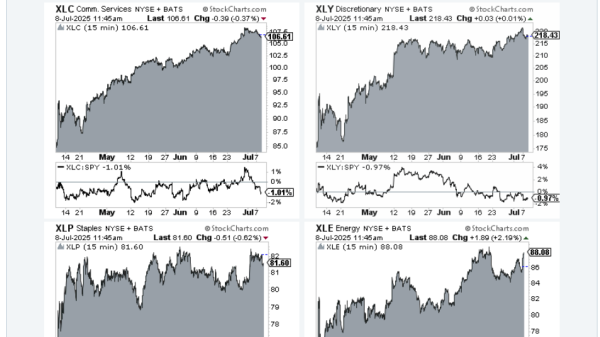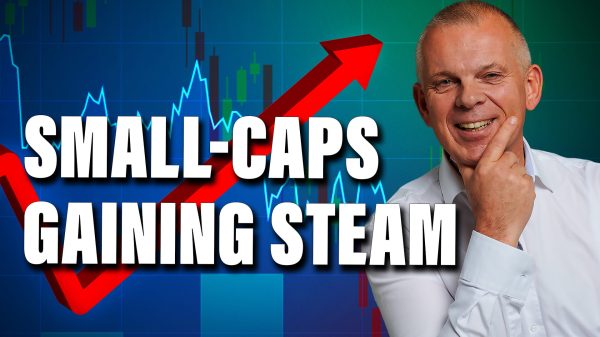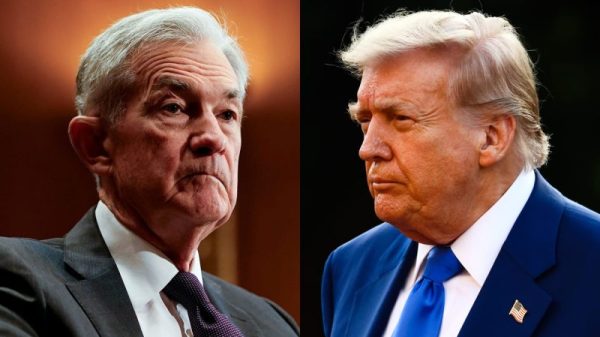Federal Reserve Chair Jay Powell said Friday he expects the central bank will cut its key interest rate in the near future in response to slower economic growth and cooling inflation.
At a speech during the Fed’s annual August summit in Jackson Hole, Wyoming, Powell said ‘the time has come for policy to adjust.’ His remarks come as price growth has slowed and the jobs market, as well as demand for borrowing money, has begun to soften to a weaker level than before the onset of the pandemic.
“Inflation has declined significantly,’ Powell said. ‘The labor market is no longer overheated, and conditions are now less tight than those that prevailed before the pandemic. Supply constraints have normalized. And the balance of the risks to our two mandates has changed.”
Markets responded favorably to the news. The Dow Jones Industrial Average closed up 462 points, or 1.14%. The Nasdaq Composite advanced 1.47%, and the the S&P 500 gained 1.15%. All three indexes remain near their all-time highs.
Federal Reserve Chairman Jerome Powell speaks during a news conference after a Federal Open Market Committee meeting at the Federal Reserve in Washington, DC, on July 31, 2024.Roberto Schmidt / AFP – Getty Images file
The speech was highly anticipated as the U.S. economy appears to be entering a new, more subdued phase following several years of surging growth following pandemic reopenings.
However, Powell was vague about the exact timing and extent of a cut, leaving market participants guessing about how exactly the Fed views the current state of economic growth.
He said the Fed’s next move would ‘depend on incoming data, the evolving outlook, and the balance of risks.” The central bank’s Federal Open Market Committee, which decides interest rates, next meets Sept. 17.
The interest rates set by the Fed are benchmarks that dictate borrowing costs for much of the economy and are its main tool for fulfilling its mandate of keeping both inflation and unemployment low.
Starting in the spring of 2022, the Fed raised interest rates to a level not seen in nearly two decades as it worked to combat soaring inflation. By making it more expensive to borrow money, the central bank sought to curb demand for goods and services and thus easing upward pressure on price growth.
The strategy has mostly worked: After hitting a peak of more than 9% in June 2022, the 12-month inflation rate has slowed to 2.9%, with some categories, including groceries and many durable goods, seeing price growth below 2% or even lower.
Now, the Fed is expressing more concern that the slower inflation is coming at the cost of jobs. In July, the unemployment rate unexpectedly inched up to 4.3%, its highest level, excluding the surge during the pandemic, since September 2017. While that is still low by historical standards, it comes as the rate of hiring has also fallen to below the pre-pandemic average.
“Our objective has been to restore price stability while maintaining a strong labor market, avoiding the sharp increases in unemployment that characterized earlier disinflationary episodes when inflation expectations were less well anchored,” Powell said Friday. “While the task is not complete, we have made a good deal of progress toward that outcome.”
In a note to clients following Powell’s remarks, Seema Shah, chief global strategist at Principal Asset Management financial group, said it was clear that ‘labor market risks now have [the central bank’s] full attention’ but that it was still waiting on August’s jobs report — scheduled to be released the first Friday of September — to determine next steps.
‘Make no mistake, if the labor market shows signs of further cooling, the Fed will cut with conviction,’ Shah wrote.
Lower interest rates will provide some relief to consumer borrowers, but it will not be immediate, according to Greg McBride, chief financial analyst at Bankrate.com.
‘The trip down is likely to be much slower than the series of interest rate hikes which quickly pushed the federal funds rate higher by 5.25 percentage points in 2022 and 2023,’ McBride wrote in a note, adding that while mortgage rates have dropped from nearly 8% last fall to about 6.6% today, they remain higher than what borrowers have seen the past two decades.
Meanwhile, he said ‘we’ve yet to see a meaningful drop in credit card or auto loan rates’ — the former still at approximately 21.5% and the latter as much as 9.5%.





























